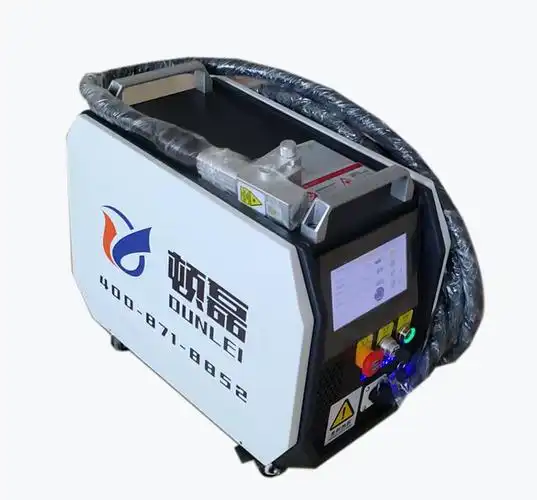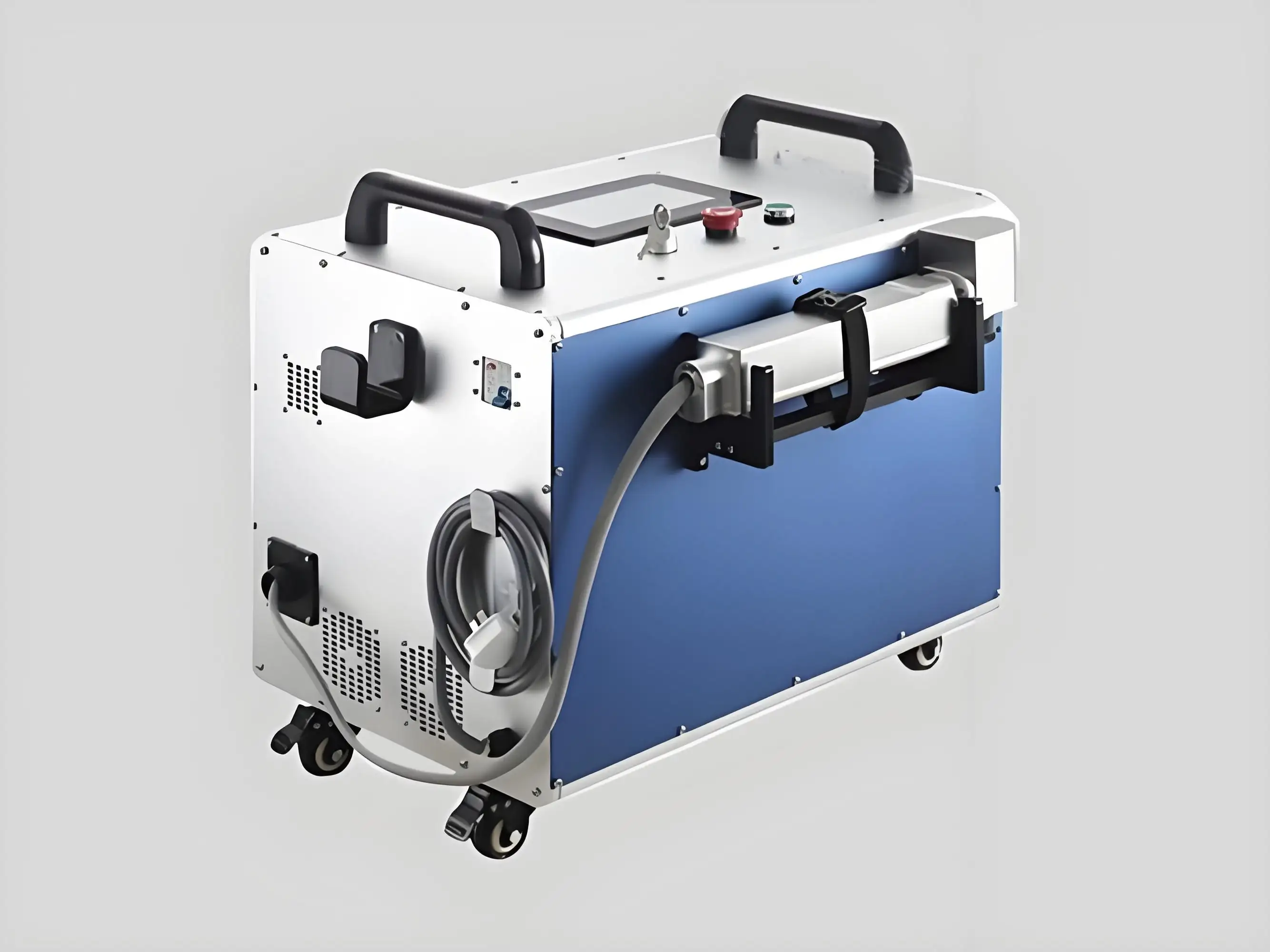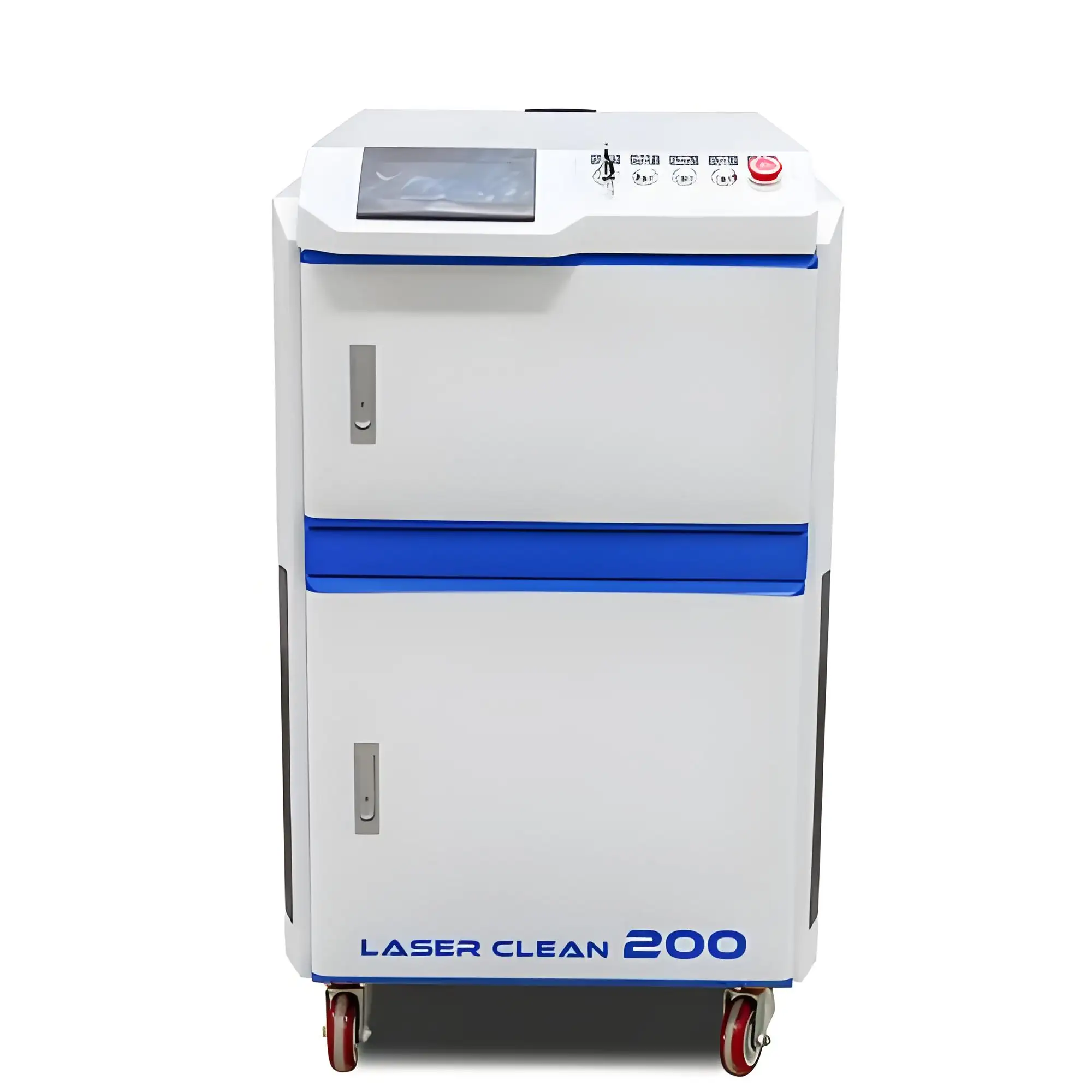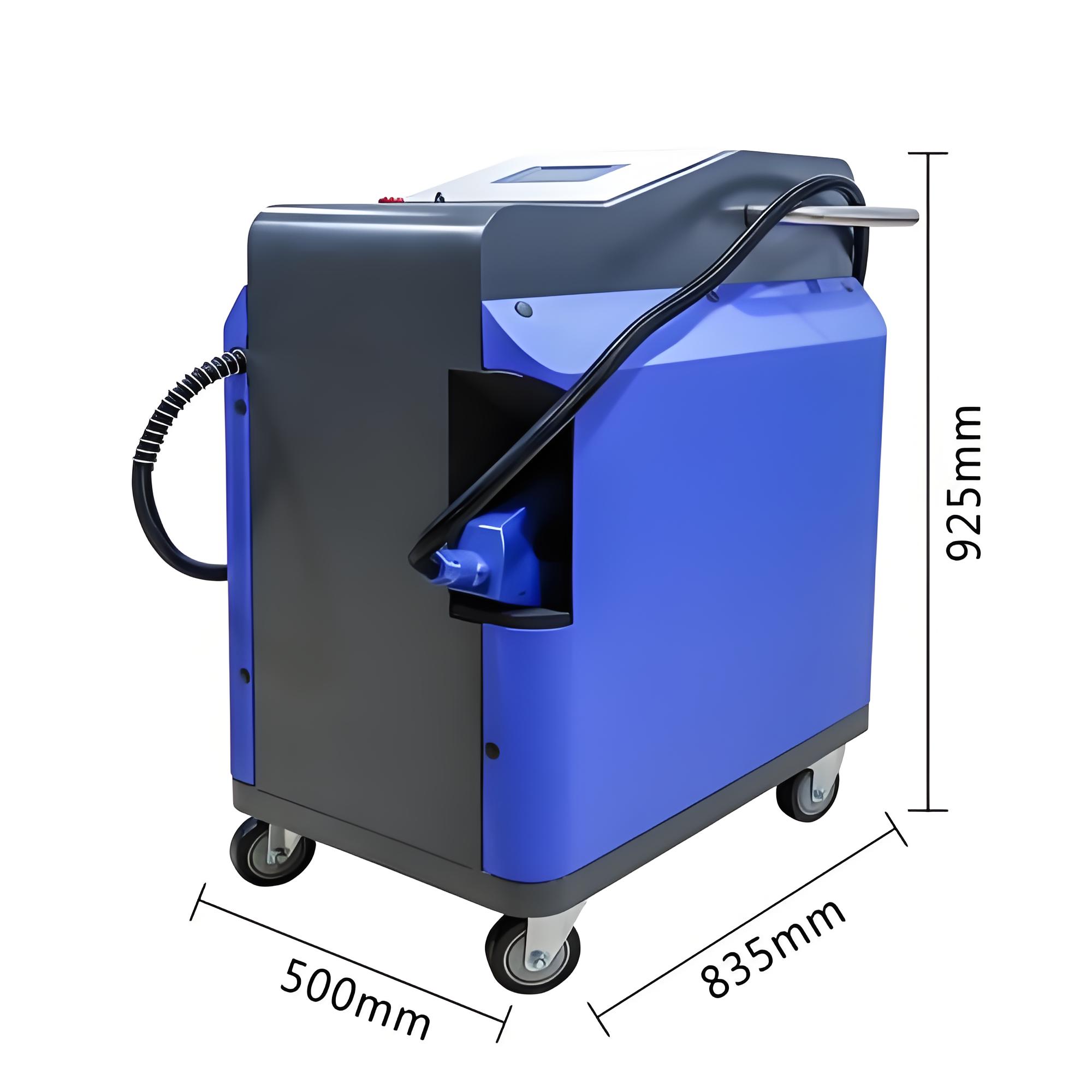As someone who’s spent over a decade in the industrial laser equipment industry, I’ve seen laser rust removal machines transform how businesses tackle corrosion in sectors like manufacturing, shipbuilding, and automotive restoration. These machines are powerful, precise, and eco-friendly, but one question I hear more and more from clients is whether they can operate unmanned—fully automated, with minimal human intervention. It’s a compelling idea: a machine that cleans rust around the clock, boosting efficiency and cutting labor costs. Having installed, tested, and consulted on these systems for years, I’ll explore the feasibility of unmanned operation for laser rust removal machines, the technology behind it, its benefits, challenges, and what you need to know to make it work in your operation.

What Does Unmanned Operation Mean for Laser Rust Removal?
Before diving in, let’s clarify what unmanned operation means in this context. It refers to a setup where a laser rust removal machine can perform its tasks—zapping rust, paint, or coatings off surfaces—without constant human oversight. This could range from semi-automated systems, where an operator sets up the machine and it runs a pre-programmed cycle, to fully automated setups integrated with robotics or conveyor systems that handle everything from workpiece positioning to laser scanning.
I remember a conversation with a factory manager who dreamed of a fully unmanned laser cleaning line for their steel parts. His goal was to run the system overnight to meet tight production deadlines. It’s an ambitious vision, but is it realistic? Let’s break down the current state of the technology and what’s needed to achieve it.
The Potential for Unmanned Operation
The good news is that unmanned operation is not only possible but already happening in some advanced setups. Laser rust removal machines are well-suited for automation due to their precision, repeatability, and integration with modern control systems. Here’s how they can achieve unmanned or near-unmanned operation:
1. Programmable Control Systems
Most modern laser rust removal machines, like those from Laserax or CleanTech, come with advanced software that allows operators to program specific cleaning patterns, power levels, and scan speeds. Once programmed, the machine can repeat these cycles consistently without human input. I’ve seen clients in automotive manufacturing use pre-programmed settings to clean batches of parts overnight, with an operator only needed to load and unload.
2. Integration with Robotics
For fully unmanned operation, many systems are paired with robotic arms or CNC systems. The laser head is mounted on a robotic arm that moves across the workpiece, guided by sensors or pre-set coordinates. A shipyard I worked with integrated a P-Laser QF-1000 with a robotic arm to clean hull sections. The system used 3D scanning to map the surface and adjust the laser’s path, requiring no human intervention during the process.

3. Conveyor and Automation Lines
In high-volume settings, laser rust removal machines can be integrated into conveyor systems for continuous operation. Parts move through the laser’s cleaning zone automatically, with sensors ensuring proper positioning. I’ve seen this in action at a steel fabrication plant, where a 2000W laser cleaner was part of an automated line, processing metal sheets with minimal oversight.
4. Remote Monitoring and Diagnostics
Many modern machines offer remote monitoring capabilities, allowing operators to check performance, adjust settings, or troubleshoot issues via a computer or mobile device. Brands like IPG Photonics provide cloud-based dashboards that alert users to errors, like a clogged filter or laser misalignment, reducing the need for on-site supervision.
5. Safety Systems for Unmanned Use
Safety is a critical concern for unmanned operation. Advanced machines come with interlock systems, motion sensors, and emergency shut-off mechanisms to prevent accidents. For example, a Laserax Shotblast I installed had sensors that paused the laser if an object entered the work area, making it safe for semi-unmanned use in a busy factory.
Benefits of Unmanned Operation
The push for unmanned laser rust removal is driven by clear advantages. Here’s why businesses are investing in this technology:
Increased Productivity
Unmanned systems can run 24/7, maximizing output. A client in the aerospace sector told me their automated laser cleaning line doubled their throughput by cleaning parts overnight, allowing them to meet tight delivery schedules.

Reduced Labor Costs
By minimizing human involvement, businesses can cut labor costs. Instead of paying multiple operators for round-the-clock shifts, a single technician can oversee an automated system. This is especially valuable in high-wage regions.
Consistent Results
Automated systems deliver repeatable precision, eliminating human error. I’ve seen programmable laser cleaners produce identical results across thousands of parts, which is critical for industries like automotive where consistency is non-negotiable.
Enhanced Safety
With automated safety features, unmanned systems reduce the risk of operator exposure to laser radiation or moving machinery. This is a big draw for industries with strict safety regulations, like shipbuilding.
Challenges of Unmanned Operation
While the potential is exciting, achieving unmanned operation isn’t without hurdles. Here are the key challenges I’ve encountered:
1. High Initial Investment
Fully automated systems, especially those with robotics or conveyor integration, are expensive. A basic 1000W laser rust remover might cost $20,000–$50,000, but adding robotics or automation can push costs to $100,000 or more. A small fabrication shop I worked with opted for semi-automated operation due to budget constraints.
2. Complex Setup and Programming
Setting up an unmanned system requires expertise in programming and integration. You’ll need to configure the laser’s parameters, align it with robotics or conveyors, and test the setup thoroughly. I’ve spent days fine-tuning systems for clients to ensure smooth operation, and it often requires collaboration with the supplier’s engineers.

3. Maintenance Requirements
Even automated systems need regular maintenance, like cleaning optics or replacing filters. While some tasks can be automated, others require human intervention. A client once had their unmanned line stall because a lens wasn’t cleaned properly, highlighting the need for routine checks.
4. Workpiece Variability
Laser rust removal works best with consistent workpieces. If your parts vary in size, shape, or rust level, the system may need manual adjustments. I’ve seen this challenge in restoration projects, where irregular surfaces required operator oversight to tweak settings.
5. Safety and Compliance
Unmanned systems must comply with strict safety standards, like Class 1 laser enclosures to prevent radiation leaks. Ensuring compliance can add costs and complexity, especially in regions with rigorous regulations. I’ve helped clients navigate these requirements, and it often involves investing in additional safety equipment.
Comparison Table of Unmanned Operation Approaches
To help you understand your options, here’s a table comparing different approaches to unmanned operation:
|
Approach |
Description |
Benefits |
Challenges |
|---|---|---|---|
|
Programmable Cycles |
Pre-set cleaning patterns, manual loading |
Cost-effective, easy to implement |
Requires operator for loading/unloading |
|
Robotic Integration |
Laser mounted on robotic arm, automated path |
High precision, fully unmanned |
High cost, complex setup |
|
Conveyor Systems |
Parts move through laser on a conveyor |
High throughput, continuous operation |
Limited to uniform parts, costly integration |
|
Remote Monitoring |
Oversight via software, semi-unmanned |
Flexible, reduces on-site staff |
Requires reliable internet, some manual input |
This table shows the trade-offs, but let’s look at how these approaches work in practice.
Real-World Examples of Unmanned Operation
I’ve seen unmanned laser rust removal succeed in various settings, but it’s not one-size-fits-all. Here are a couple of examples:
Automotive Manufacturing: A client integrated a Laserax Shotblast with a robotic arm to clean engine components. The system used 3D vision to map parts and ran overnight with minimal oversight. The result? A 40% increase in output and reduced labor costs. However, the initial setup took weeks and required significant investment.
Steel Processing Plant: A plant used a CleanTech LPC-2000 on a conveyor line to clean metal sheets. The system was semi-unmanned, with operators loading sheets at the start of each shift. It worked well for uniform parts but struggled when they introduced irregularly shaped pieces, requiring manual adjustments.
These cases show that while unmanned operation is achievable, it requires careful planning and the right equipment.

How to Achieve Unmanned Operation
If you’re considering unmanned laser rust removal, here’s how to make it happen:
1. Choose the Right Machine
Look for models with automation-ready features, like programmable controls, robotic compatibility, or conveyor integration. Brands like Laserax, P-Laser, and IPG Photonics offer systems designed for automation. For example, the P-Laser QF-2000 supports robotic integration out of the box.
2. Invest in Automation Infrastructure
Depending on your needs, you may need robotic arms, conveyor systems, or vision sensors. Work with a supplier who can provide turnkey solutions or recommend compatible automation partners. I’ve helped clients pair CleanTech lasers with FANUC robots for seamless integration.
3. Train Your Team
Even unmanned systems require trained personnel for setup, maintenance, and troubleshooting. Ensure your team understands the software and safety protocols. Most suppliers offer training programs, and I recommend scheduling refreshers for new staff.
4. Plan for Maintenance
Automate maintenance tasks where possible, like filter monitoring, but budget for regular technician visits. A preventive maintenance contract can catch issues before they disrupt your unmanned operation.
5. Ensure Safety Compliance
Invest in Class 1 enclosures or safety sensors to protect workers and meet regulations. Consult with your supplier to ensure your setup complies with local standards, like OSHA or CE requirements.
6. Start Small
If you’re new to automation, begin with semi-unmanned operation using programmable cycles. This lets you test the waters without committing to a full robotic system. One client I worked with started with a semi-automated CleanTech unit before upgrading to a robotic setup a year later.

The Future of Unmanned Laser Rust Removal
The trend toward unmanned operation is growing as industries prioritize efficiency and automation. Advances in AI-driven vision systems, robotic integration, and remote diagnostics are making fully unmanned laser cleaning more accessible. I recently spoke with a supplier rep who predicted that within five years, most high-end laser rust removers will include built-in AI for real-time adjustments, further reducing the need for human oversight.
That said, unmanned operation isn’t for everyone. Small shops or businesses with varied workpieces may find semi-automated systems more practical. The key is to match the technology to your operation’s scale and needs.
Wrapping Up
Laser rust removal machines can absolutely achieve unmanned operation, thanks to programmable controls, robotic integration, conveyor systems, and remote monitoring. These setups offer increased productivity, cost savings, and consistent results, but they come with challenges like high costs, complex setup, and maintenance needs. From my years in the industry, I’ve seen businesses transform their workflows with unmanned systems, but success depends on choosing the right equipment and planning carefully.
Whether you’re a factory manager aiming for 24/7 production or a small shop exploring automation, understanding your options is the first step. Work with a reputable supplier, invest in training, and start with a system that fits your budget and goals. With the right setup, unmanned laser rust removal can be a game-changer for your operation.

Related Questions and Answers
Q: Are fully unmanned laser rust removal systems safe?
A: Yes, with Class 1 enclosures, motion sensors, and emergency shut-off systems, unmanned setups can meet strict safety standards. Always ensure compliance with local regulations like OSHA or CE.
Q: How much does it cost to set up an unmanned laser rust removal system?
A: Costs vary widely. A basic 1000W machine with programmable cycles might cost $20,000–$50,000, while robotic or conveyor systems can exceed $100,000. Factor in installation and training costs.
Q: Can unmanned systems handle irregular workpieces?
A: It’s challenging. Systems with 3D vision or AI-driven controls can adapt to varied shapes, but irregular workpieces often require manual tweaks or semi-automated setups.
Q: How do I maintain an unmanned laser rust removal system?
A: Follow the supplier’s maintenance schedule, cleaning optics and filters regularly. Invest in a preventive maintenance contract for professional inspections to catch issues early.






